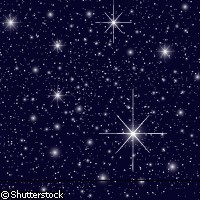A European way of looking to the stars
The European Union has given the green light to continue its support for RadioNet under the Seventh Framework Programme (FP7). RadioNet has already proved instrumental in building a radio astronomy community in Europe (and beyond), a goal set and achieved with funding support under the Sixth Framework Programme (FP6). With a further EUR 10 million in funding from FP7, this success story has now set its sights on sharing facilities and knowledge with the global astronomy community. RadioNet was awarded EUR 12.4 million under the Integrated Infrastructure Initiative of FP6 for a five-year plan to bring together Europe's leading radio observatories (those covering the frequency range of 10 MHz to 1 THz). The agreement to continue funding the project for a further three years (from 2009 to 2011) under FP7's Capacities Programme is indicative of the great strides the consortium has made in furthering European (and indeed global) radio astronomy practices. 'Radio astronomy is the study of celestial objects that emit radio waves,' said Professor Michael Garrett, RadioNet Coordinator and General Director of the Netherlands Institute for Radio Astronomy (ASTRON). Celestial objects, he explained, include stars, compact objects (such as black holes) and galaxies, particularly those centrally dominated by supermassive black holes and those that are star forming. Under radio astronomy, relic radiation is also studied. Known as the cosmic microwave background, it is associated with the beginning of the universe itself - the big bang. As Professor Garrett noted, 'With radio astronomy, scientists can study astronomical phenomena that are often invisible in other portions of the electromagnetic spectrum (for example, in the optical [portion]), where our view can be highly obscured by dust.' In 2009, RadioNet has grown to include 26 partners from 13 different countries, including EU Member States as well as South Africa, South Korea, and the United States. In addition to continuing to support collaborative activities between radio astronomy facilities in Europe (and beyond) and providing an access route to Europe's largest and most sensitive radio telescopes, the new three-year RadioNet plan will include joint research activities, training for undergraduates and postgraduates, and workshops pinpointing new emerging research areas. 'We aim to continue to provide astronomers with the very best radio telescope facilities; via FP7 funding we can ensure that these facilities are continually at the leading edge of astronomical instrumentation (state-of-the-art facilities that match and indeed exceed the capabilities of similar telescopes elsewhere in the world). We wish to make those facilities easily available to the entire astronomical community, providing telescope time on the basis of merit alone, and not on location or nationality,' explained Professor Garrett. The RadioNet consortium intends to host scientific and engineering workshops where results generated from the use of these telescopes can be shared amongst the entire astronomical community. The team will also be involved in activities surrounding large future radio projects, including the construction of the next generation of radio telescopes: the Atacama Large Millimetre Array (ALMA), which is currently being built in Chile, and the Square Kilometre Array (SKA). 'The SKA is a global project that is part of the European Strategy Forum on Research Infrastructures (ESFRI) list of opportunities,' said Professor Garrett. 'This telescope will transform our view of the universe, permitting us to probe the so-called "dark ages" when the first stars and galaxies began to form - a few hundred million years after the big bang.' Funding for RadioNet has also been provided by national bodies in support of their participating institutes. The aims of the RadioNet project are also greatly assisted by the European VLBI Network (EVN).



